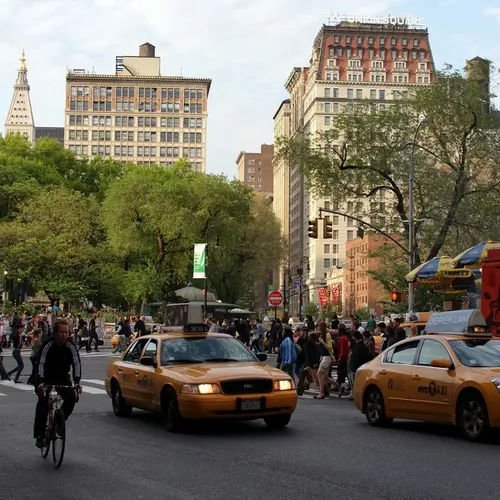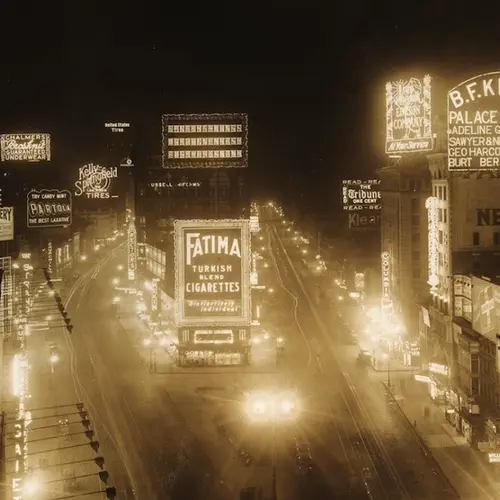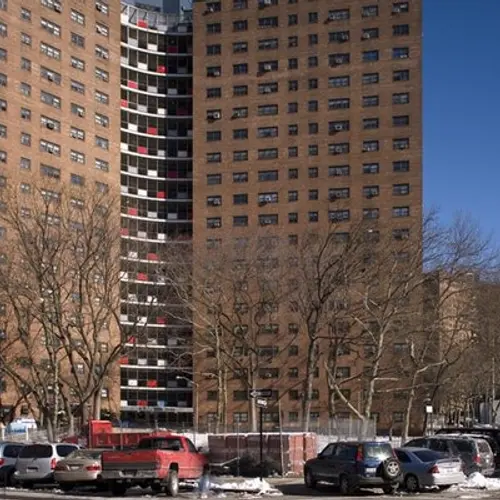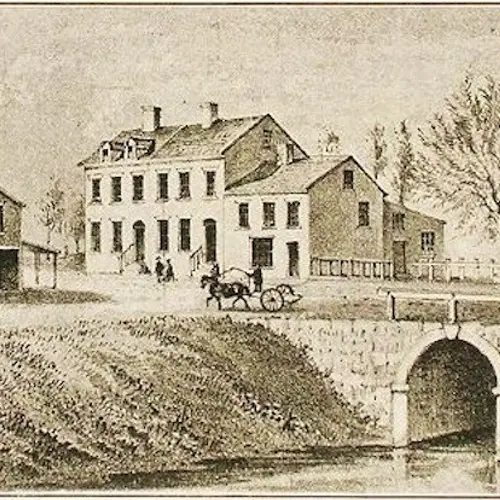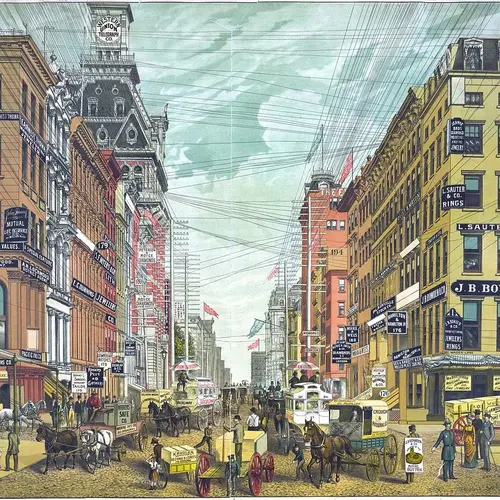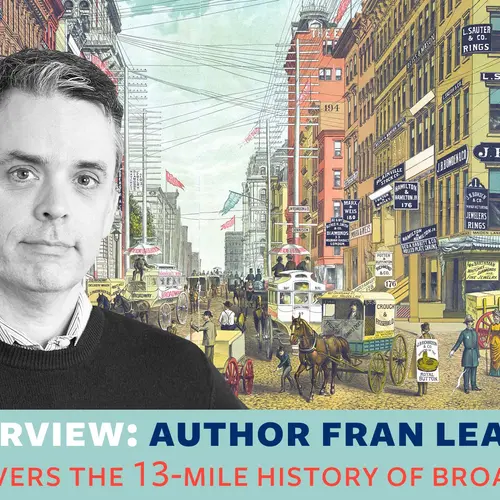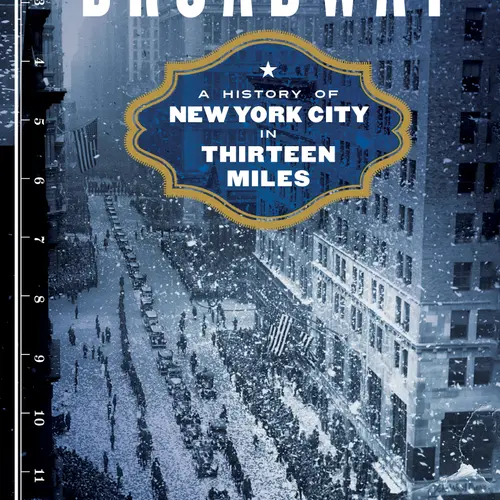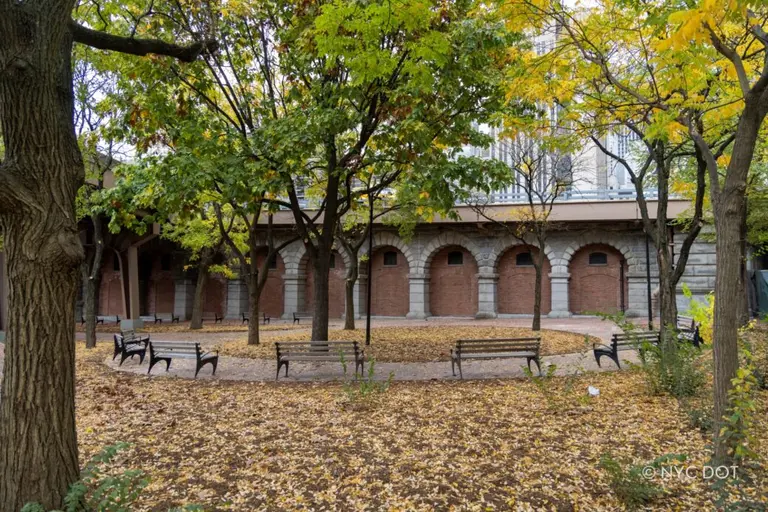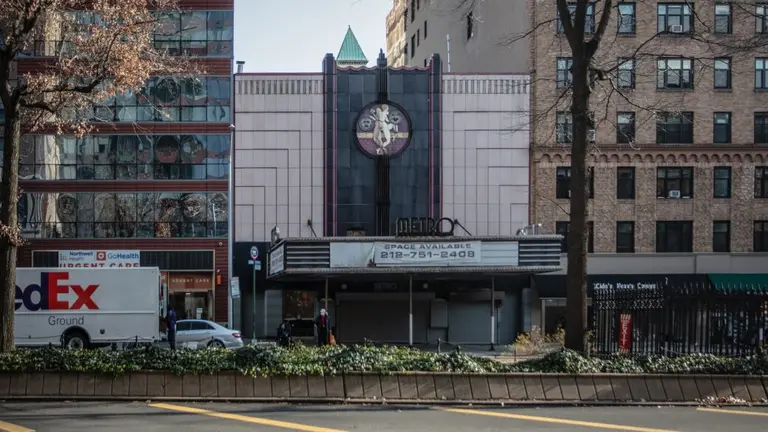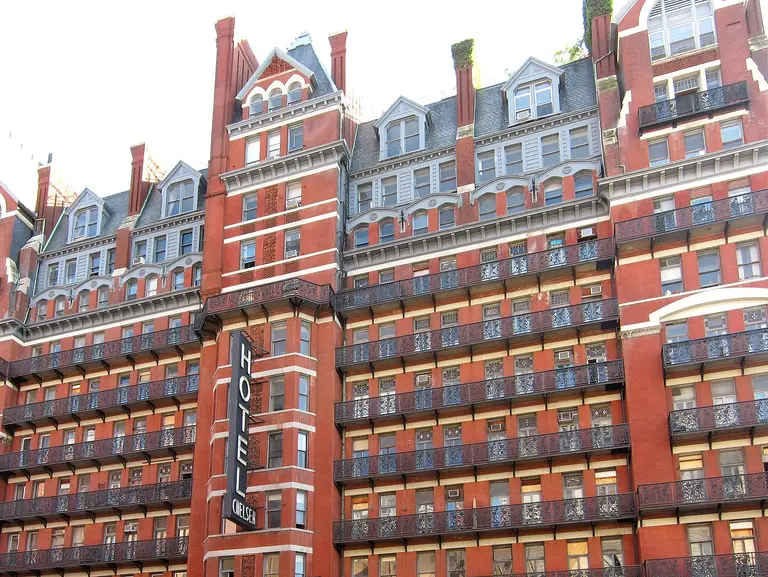INTERVIEW: Author Fran Leadon tackles the mile-by-mile history of NYC’s most famous street
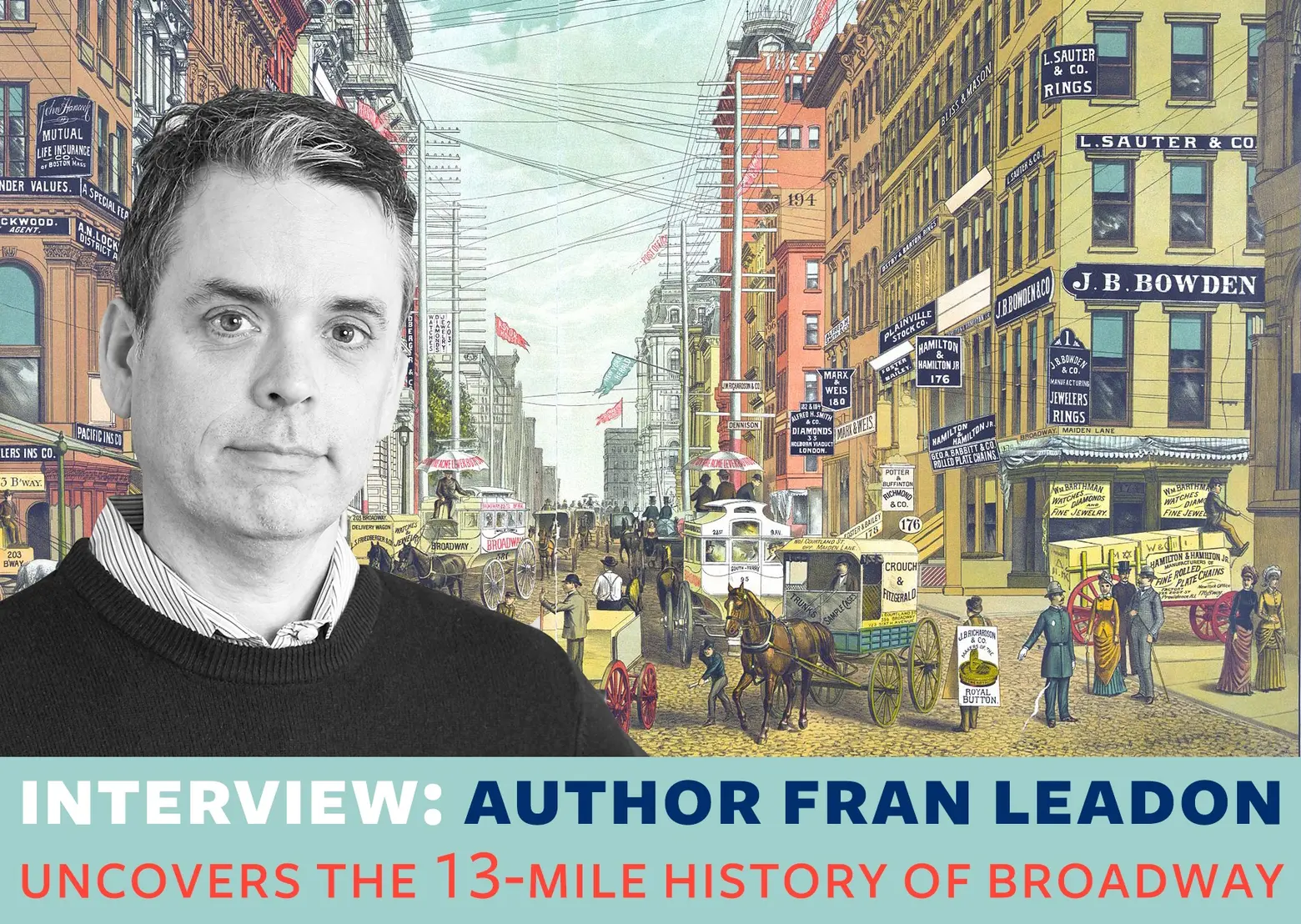
Photo of Frank Leadon © Katherine Slingluff
Photo of Frank Leadon © Katherine Slingluff
In “Broadway: A History of New York City in Thirteen Miles,” architect Fran Leadon takes on a monumental task: to uncover the news events, people, businesses, and buildings–mile by mile–that have contributed to New York’s best-known street. Beginning as a muddy path that cut through the Dutch colony of New Amsterdam and dissolved into farmland, Broadway has evolved over 200 years to host a chaotic mix of traffic, hotels, stores, theaters, churches, and people. In its first mile, you can see 400 years of history, from the Civil War to the emergence of skyscrapers. Moving uptown, Broadway takes us to the city’s cherished public spaces–Union Square, Herald Square and Times Square–as well as the Theater District and Great White Way. The street continues to upper Manhattan, where the story of urban renewal plays out, then cuts through the Bronx and winds all the way to Albany.
In his book, Leadon focuses on Manhattan’s relationship with Broadway, making the argument that you can tell the story of NYC–and even the country–through these 13 miles. “Broadway was never just a thoroughfare; it has always been, first and foremost, a place,” he writes. With 6sqft, Leadon talks about understanding Broadway, a street he often experienced in fragments, as a single 13-mile thoroughfare that serves as the lifeblood of New York. He also discusses how years of research and discovery made it to the pages, surprising histories that emerged along the way, and why he’s still writing the history of Broadway in his head.

So tell me a little bit about your background.
Fran: I’m an architect and I’ve been teaching at City College, in the School of Architecture, for almost 20 years.
How did the idea of the book come to you?
Fran: The only other book I’ve done is the AIA Guide to New York City. I was the co-writer with Norval White, one of the surviving of the two original co-authors. I started doing that in 2008 and it came out in 2010. It was two years of exploring New York, walking every street, taking thousands of photographs. The thing that was frustrating was that I could only write, at best, maybe a paragraph about something. While the book was really comprehensive, I was itching to do something where I could not be so constrained by the format and write more about the city. I thought writing about just one street would be less expansive and allow me to get into more detail.
What drew you to Broadway?
Fran: I was thinking about Park Avenue, the Bowery, 42nd Street. I didn’t think of Broadway at first because I figured there were shelves full of books on the history of Broadway. I went looking for them and was astonished there weren’t, really. I did it because it was the most famous street in New York–probably the most famous in the country–and I couldn’t believe nobody had written a history of it.
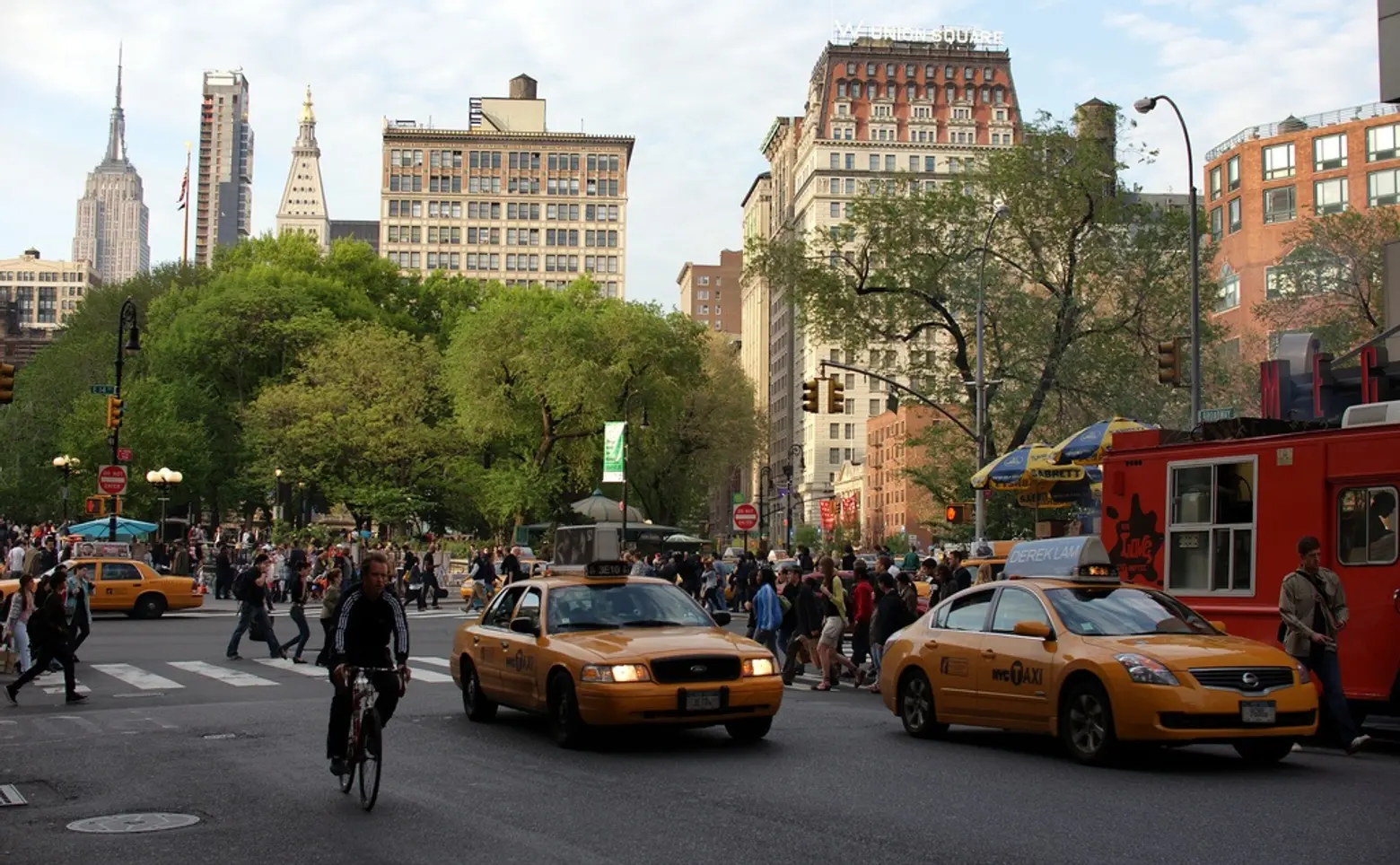 Broadway and Union Square, via Flickr Creative Commons
Broadway and Union Square, via Flickr Creative Commons
You commented in the book that Broadway is often experienced in fragments. How did you make the transition, of visiting different portions at different times, to understanding it as a single thoroughfare?
Fran: I wrote that because that’s the way I had always experienced Broadway. I had isolated experiences: Union Square, Herald Square, Times Square, at different times, from different directions, for different reasons. I was astonished when I just walked up the street for the first time–it didn’t take that long, you can do it in a day. So much has happened on Broadway, and it has so many iconic moments, it got exaggerated in my mind.
On those early walks, what were you struck by?
Fran: Originally it was supposed to be a first-person walking tour, and I was going to go all the way up to Albany. I cut down the scope and eventually lost the first person narrative. But what struck me was, when I was still thinking of it that way, visiting Broadway at different times of day. Walking up the street on a Sunday morning, in the summer, starting at 6am–it’s completely different than I imagined. When the light is coming up, the way it plays on all the different buildings is really dramatic. And when no one else is around, in the wee hours, it turns into what it used to be–a farm path, a rural pathway.
You’re able to track the beginnings of this thoroughfare as a muddy path that dates to the earliest history of New York and grows just as rapidly as the city. It feels like you can tell a complete history of NYC through that single street.
Fran: That was the original question I had–can you do that? I definitely think you can, and not only that, you can make the argument that you could study the history of Broadway and understand the history of the country. All the key moments are there–that was really surprising to me.
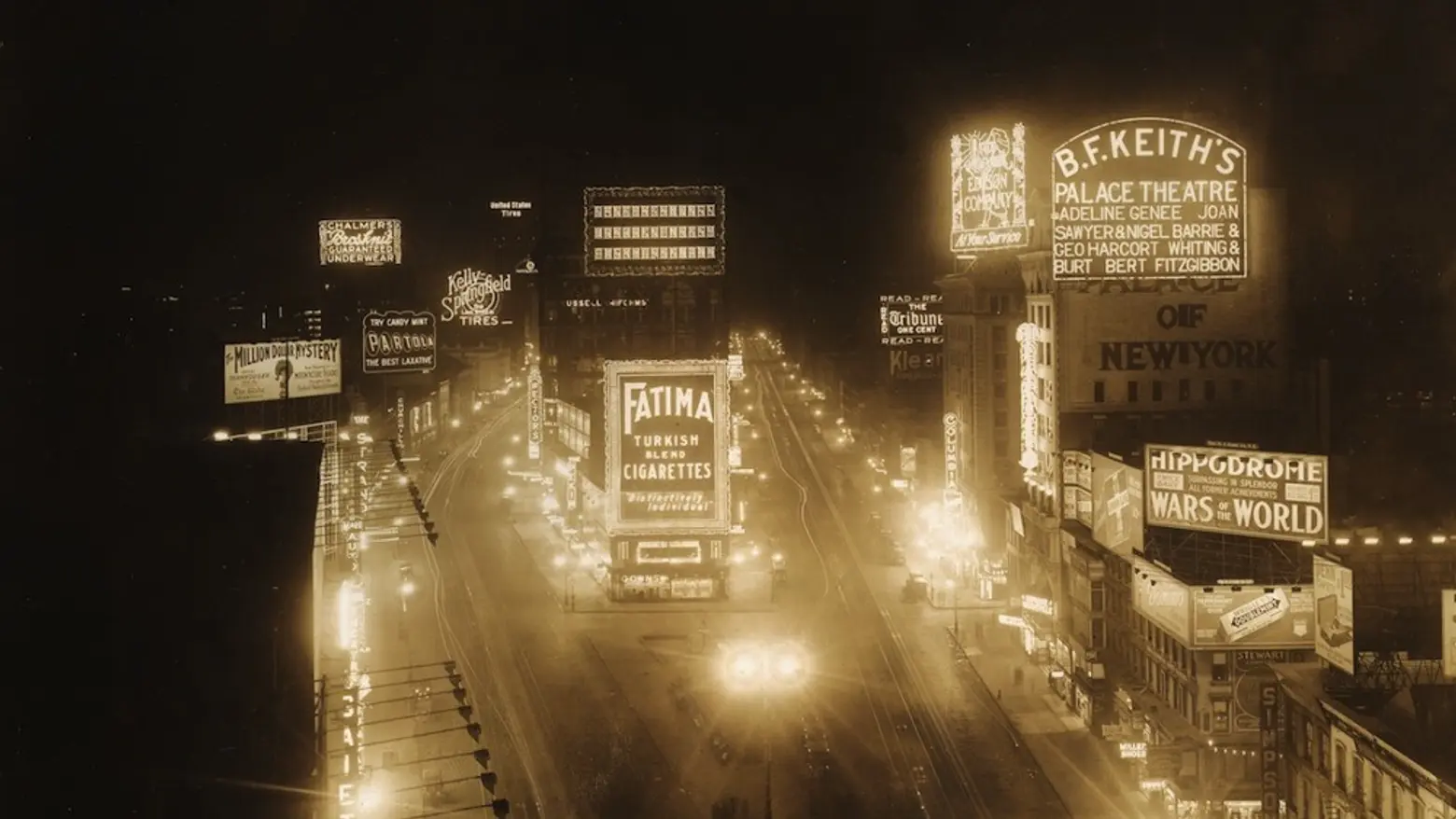 The Great White Way, via Spotlight on Broadway
The Great White Way, via Spotlight on Broadway
Broadway becomes this idea that people want to replicate in other cities around the country. What was it about New York’s Broadway that impressed so many visitors?
Fran: The Great White Way was something that came together in New York by accident–it was never planned. It was an intersection of different technologies, the skyscraper, the invention of electric light, and the growth of the subway spurring the development of hotels and theaters. It all gave way to the birth of popular culture as we know it. So the Great White Way part of Broadway became something that people realized they could just replicate. They weren’t always successful doing that.
What interested me is that even when Broadway was a mile or two long–when it wasn’t that impressive–in the late 18th century, early 19th century, they were saying all the same things. People thought it was the most impressive avenue in the western world, the path of progress, a noble avenue, when there really wasn’t anything there. The perception came first–they were seeing this image–and then the actual Broadway fulfilled this vision of the street.
You tackle Broadway’s history mile by mile. Why did you decide to do that?
Fran: It’s the reason it took me eight years to write the book–I really struggled with whether that structure would work or not. Originally, I wanted to do it section by section–but that’s what [author] David Dunlap had done [in a photography book] in 1990. But I came up with the title, which everyone loved–including me–and the title dictated that it had to be mile by mile. What it ultimately became is that I could focus on each mile, and each mile has discrete stories within it.
You were able to pull out some great, specific details and characters for each mile. How did you pick what made it into the book?
Fran: Once I set up the structure, the daunting thing was that the first mile–from the Battery to City Hall–there’s 400 years of history. The book could have just been about the first mile. I had to cut out chapters about the Woolworth Building, Einstein’s ticker tape parade, City Hall, because the first mile became nearly half the book. But by Mile Nine and Ten, there were comparatively fewer stories to tell.
In the lower first couple of miles, there were things I had to include–like ticker tape parades, skyscrapers, traffic, PT Barnum. But going north, towards the Upper West Side, it gets more subjective. There I relied on interesting, obscure stories I was attracted to.
I thought it’d get less interesting as you moved north. It was quite the opposite. I think my favorite mile is Mile 12, where I talk about three guys: a tycoon on a hill, a squatter looking up at him, and a sculptor. That mile I could focus on those three biographies. So I felt less constrained and it was more interesting to me, actually.
Did you tackle each mile one by one?
Fran: I was fighting a couple battles at the same time. I’d be trying to finish up the third mile while, in the rest of my time, I was beginning to research the 11th mile. I was doing scattershot research, seeing what places felt like at different times of day and from different points of view, and trying to read as many old sources as I could.
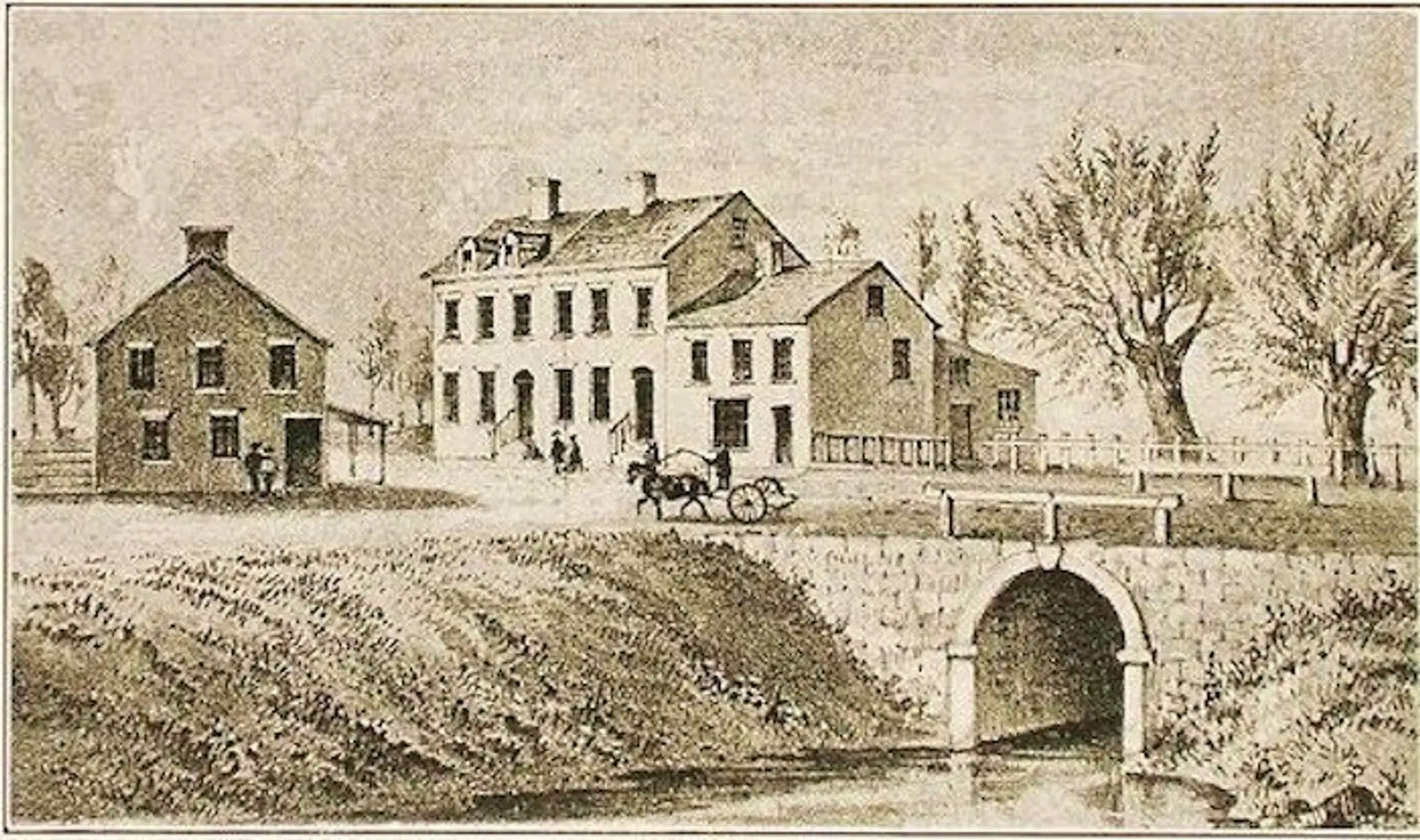 Bridge at Broadway and Canal Street, via Wikimedia Commons
Bridge at Broadway and Canal Street, via Wikimedia Commons
As you move uptown, you cover the emergence of public housing development. And one big criticism of public housing design–that it ignores the street–plays out on Broadway.
Fran: City-wide, Broadway was the economic engine. It drove the development of the city. The Bowery could have been Broadway, but Broadway ends up being extended by a bridge into what is now Soho. Land on Broadway–even though it was nothing more than a dirt track that had been surveyed at that time–was way more valuable than property just a block away. So already they were anticipating that developing Broadway would lead to the development of the whole area.
The fact that buildings faced Broadway–that they didn’t turn their backs to it–was really important. I ran into more advertisements than I can count, going back to the 1800s, that make sure to say the business’ distance from Broadway. Everyone was trying to get as close as they could.
Once you get up to Manhattanville, with the housing projects, that’s the only time that urban renewal type of projects intruded on Broadway. It was remarkable how quickly those buildings could destroy that relationship with the street. It feels forlorn as any street in America, at that point.
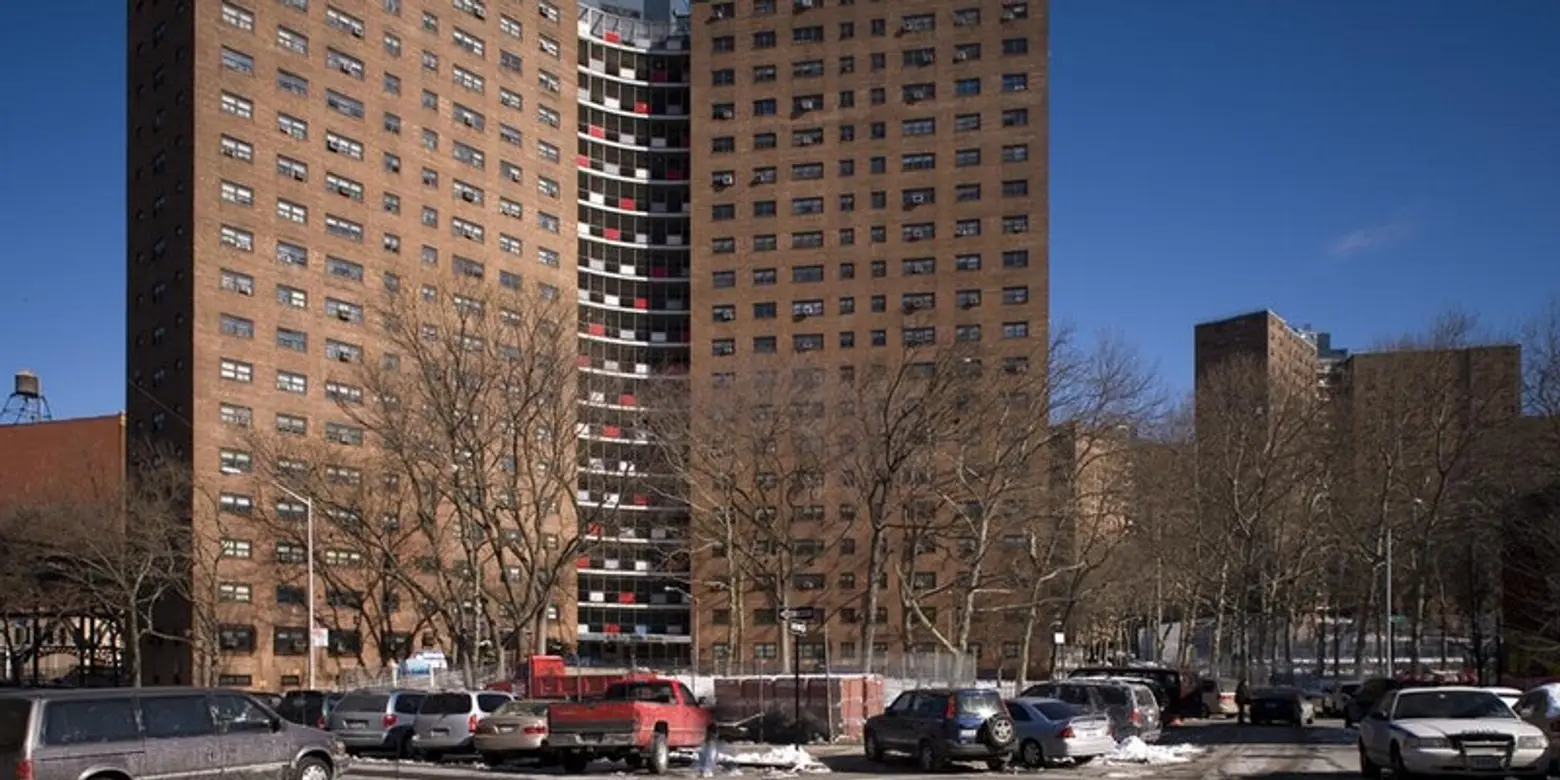 Manhattanville Houses, via NYCHA
Manhattanville Houses, via NYCHA
There are so many enduring ideas of what Broadway has been–shopping, fashion, the Great White Way, Times Square–that carry on today, even as the city has changed.
Fran: Over the last 200 years, people wrote about Broadway changing all the time. Its nature is constant change, and that was part of its appeal. If that’s true, it doesn’t matter how much it changes–it’ll still be Broadway. But that concept didn’t work in Manhattanville at all. I also wonder about closing off sections to traffic–like the pedestrian plaza in Times Square–and what that will do to Broadway.
Do you think it’s crucial to have a mix of cars, pedestrians, and business on the street?
Fran: Yeah, I do. I’ve read enough people saying that for 200 years and I’ve come to agree with it. The chaos and traffic of Broadway is key to its identity. I like being able to sit in a plaza, I’ve enjoyed it, but I think it might be better on a different street. Broadway should have taxis, buses cars going down it.
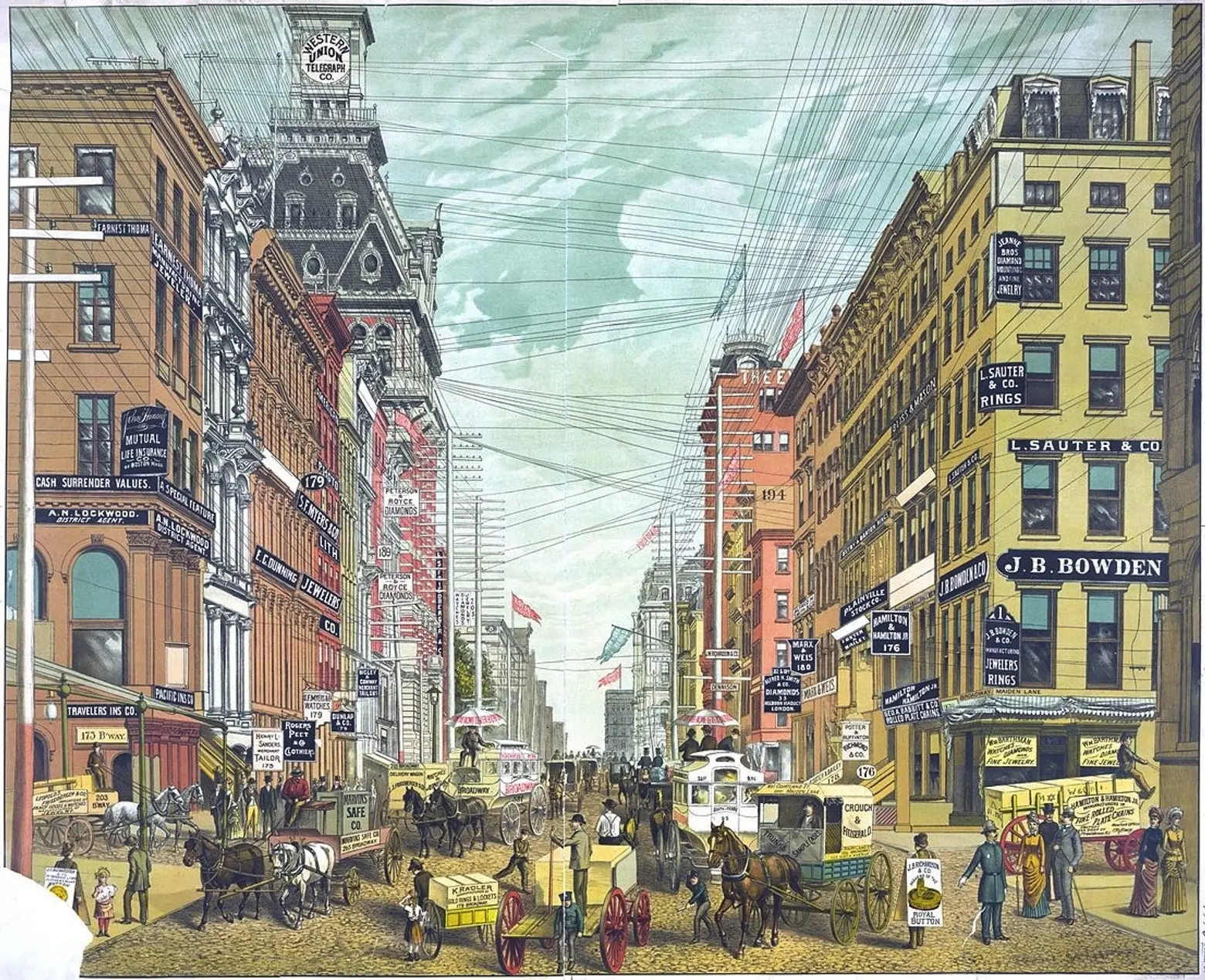 Lithograph of Broadway circa 1885, via Wikimedia Commons
Lithograph of Broadway circa 1885, via Wikimedia Commons
Any surprising stories along Broadway that stuck with you?
Fran: There are so many. The very first inaugural subway ride was supposed to be ceremonial. Mayor George McClellan Jr. was going to drive it from the City Hall Station, slowly, a station or two, before the motorman was supposed to take over. But McClellan floored it. He was having such a gas, he refused to relinquish the controls and went all the way up to 145th Street.
After finishing the book, what’s it like walking down Broadway?
Fran: I’m still writing it in my head. Now that it’s done, I would love to rewrite it. I tried to write about Broadway in all its complexity, and I feel that I never came to any big conclusion about what it all meant. Now, I’m starting to get that. I’m wishing I could go back and write an epilogue.
What in New York is inspiring you lately?
Fran: The neighborhoods and buildings are always astonishing. Lately, I’ve been walking around Brooklyn and taking photographs of row houses.
The book actually started with a focus on architecture. But I don’t think it’s about architecture at all. What I really got interested in was all the people. It felt like America, concentrated. It’s all there.
+++
“Broadway: A History of New York City in Thirteen Miles” will be released on April 17th and available at local booksellers and on Amazon.
RELATED:
